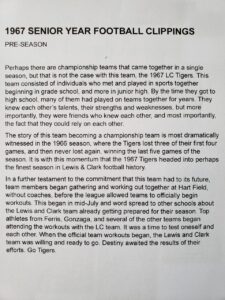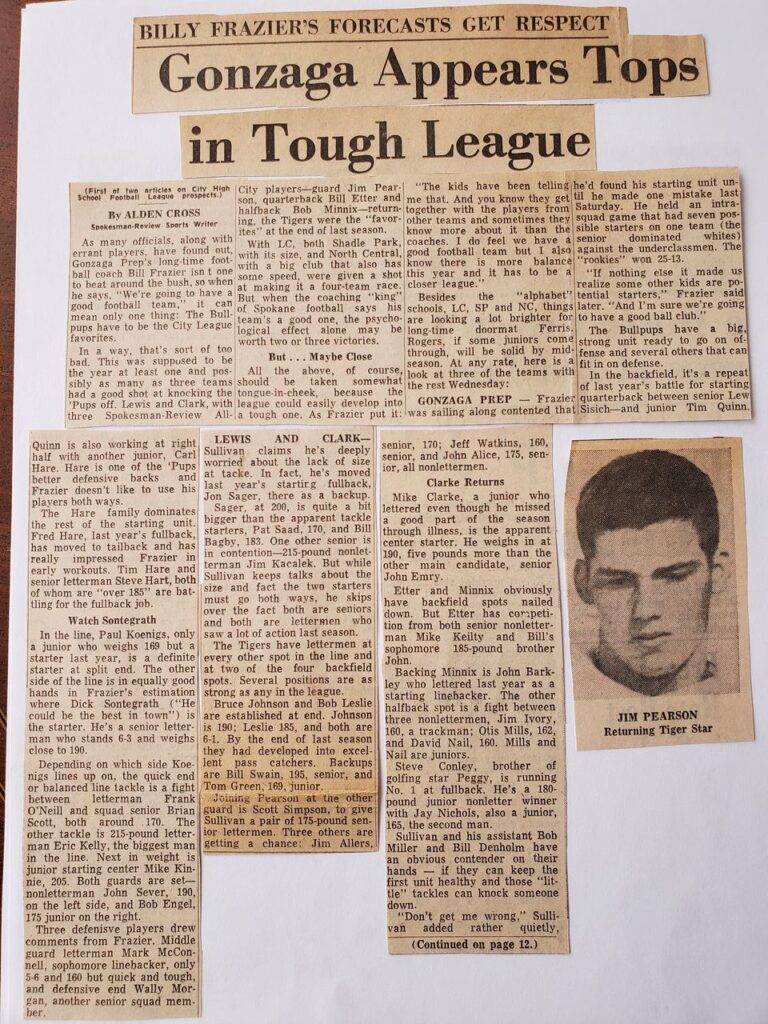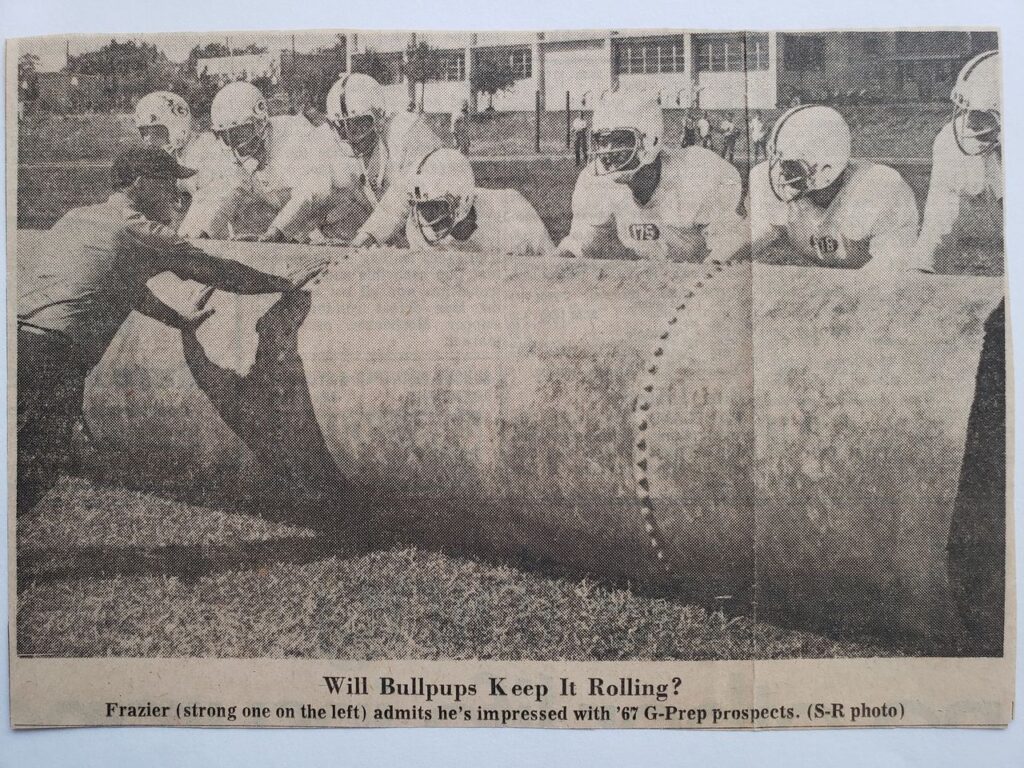PRE-SEASON
Perhaps there are championship teams that came together in a single season, but that is not the case with this team, the 1967 LC Tigers. This team consisted of individuals who met and played in sports together beginning in grade school, and more in junior high. By the time they got to high school, many of them had played with and against each other for years. They knew each other’s talents, their strengths and weaknesses. They were friends who knew each other, and most importantly, they knew that they could rely on each other.
The story of this team becoming a championship team is most dramatically witnessed in the 1966 season, where the Tigers lost three of their first four games, and then never lost again, winning the last five games of the season. It is with this momentum that the 1967 Tigers headed into perhaps the finest season in Lewis & Clark football history.
In a further testament to the commitment that this team had to its future, in the summer preceding the championship season, team members began gathering and working out together at Hart Field without coaches, before the league allowed teams to officially begin workouts. This began in mid-July and word spread to other schools about the Lewis and Clark team already getting prepared for their season. Top athletes from Ferris, Gonzaga, and several of the other teams began attending the workouts with the LC team. It was a time to test oneself and each other. When the official team workouts began, the Lewis and Clark team was ready to go. Destiny awaited the results of their efforts. Go Tigers.
Editor’s Note: In 2008 at the 40th Class Reunion, this editor had a discussion with Bob Minnix about the team, and several of his personal perspectives.
- Bob recalled that in 1967, the coaches in the league took care to have their teams play with respect for the other teams. For the ’67 Tigers (a truly explosive offensive team), this translated into not running up the score on its opponents. In many of the games in the 1967 season, the 1st team offense did not play in the 4th quarter. The starters were frequently pulled before the end of the 3rd quarter, and the 2nd and 3rd offensive teams were called on to finish the game. When considering the number of City League records that were broken by the team and its individual players, one is left to speculate what additional records might have been broken had the 1st team offense been allowed to continue to play.
- Bob also commented on his coaching days after college. He would tell his young players that when he played for LC, whenever quarterback Bill Etter handed him the ball, Bob would run as hard as he could at the place in the line where “the hole” was supposed to open, knowing that when he got there “the hole” would be open, and Bob could burst through for significant yardage, and sometimes for touchdowns. Bob credited the LC linemen as being some of the finest athletes he ever played with, even after high school when both he and Bill Etter were at Notre Dame. Bob credited the “relatively small” LC offensive line, with its courage, speed and agility, for the offensive success of the team. This is reflective of how the members of this team, played as a team, not as individuals. It made all the difference.



